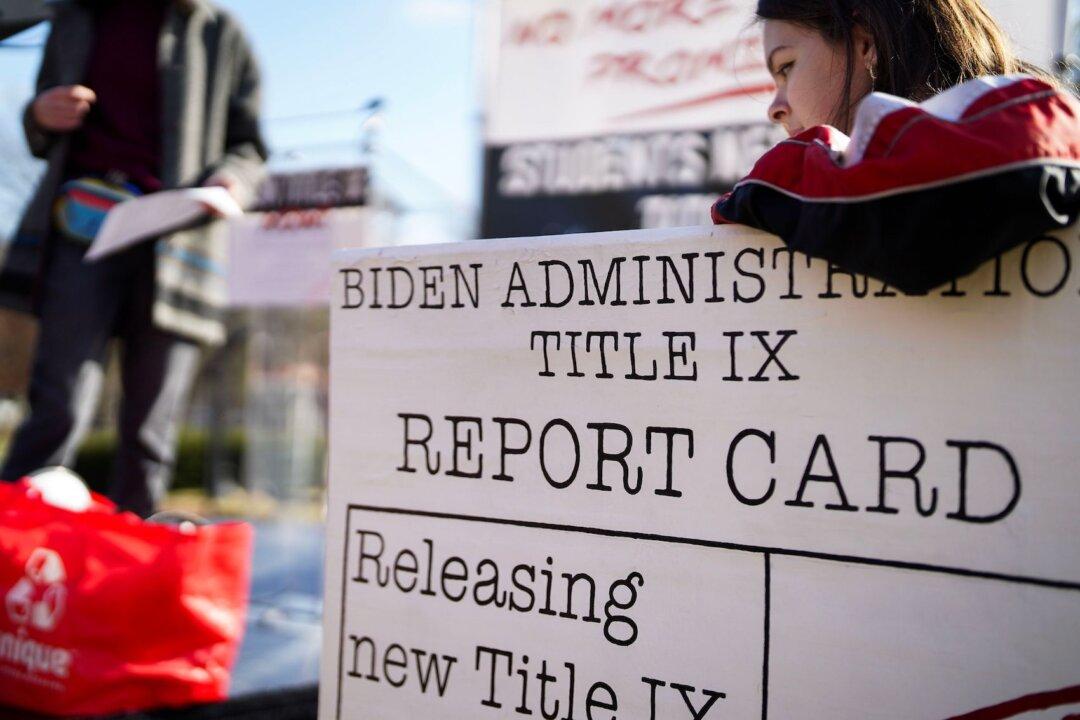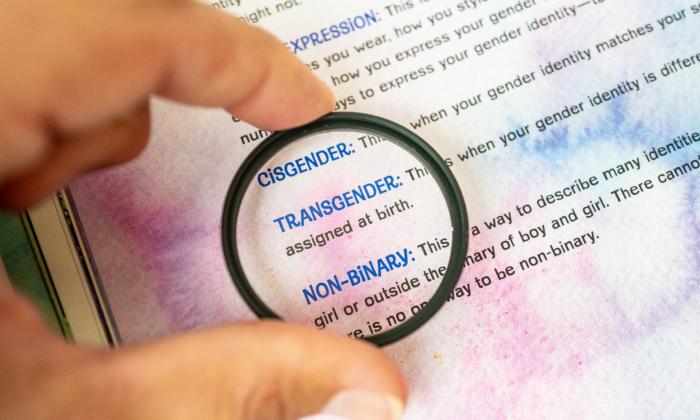Commentary
Last April, the influential
New England Journal of Medicine published an advocacy column by a medical school professor that argued, “To promote equity, the Biden administration should distribute resources differentially in order to benefit groups that are persistently disadvantaged.”
Translated from woke-speak, that means creating a medical system that discriminates against people who are not of color.
COVID-19 provided the convenient pretext for that process to begin. With the pandemic still raging—and therapeutics in inexcusably short supply—several jurisdictions established protocols to guide doctors in deciding which patients should receive needed treatment first.
Establishing such priorities in a time of resource shortages is ethical when based strictly on medical criteria rather than ideological considerations. In other words, priorities should never be predicated on invidious distinctions, such as race, sex, wealth, sexual orientation, disability, and so on.
Alas, equity mongers in a few states have set priorities based, in part, on invidious categories of race and ethnicity. The pretext for discrimination comes from published “fact sheets” published by the U.S. Food Drug Administration (FDA) providing guidance for the dispensation of certain anti-viral therapeutics. For example, for the distribution of sotrovimab, the FDA states under the “Patient Selection” provisions that certain medical conditions should be considered when determining who should receive the medicine, including factors such as older age, pregnancy, kidney disease, and having a medical-related technology dependence.
That’s all fine and good. But then the text states (
pdf): “Other medical conditions or factors (for example, race or ethnicity) may also place individual patients at high risk for progression to severe COVID-19, and authorization of sotrovimab ... is not limited to the medical conditions or factors listed above.”
How are race and ethnicity relevant? The virus doesn’t discriminate. Equally medically situated people face a roughly equal extent of risk, no matter the color of their skin.
So, why bring that up? The answer requires us to follow a bit of a circuitous route. The FDA fact sheet refers to a Centers for Disease Control and Prevention (CDC) COVID informational tract that describes the
factors associated with the risk of severe disease, which includes obesity. The guidance then directs the reader to a link that
states in part: “Hispanic and non-Hispanic Black adults have a higher prevalence of obesity and are more likely to suffer worse outcomes from COVID-19.”
“A growing body of research shows that centuries of racism in this country has had a profound and negative impact on communities of color. The COVID-19 pandemic and its disproportionate impact on people from some racial and ethnic groups is a stark example of these enduring health disparities. COVID-19 data shows that Black/African American, Hispanic/Latino, American Indian and Alaska Native persons in the United States experience higher rates of COVID-19-related hospitalization and death compared with non-Hispanic White populations.”
OK. That’s certainly a societal problem worth addressing societally. But what does that have to do with assessing individual patients based on their particular medical situation? Not a thing.
Neither the FDA nor the CDC directs doctors to discriminate in providing COVID care. But equity bureaucrats believed they had their marching orders. Thus, the New York Department of Health (and New York City’s) recently issued a directive that allows for discrimination. After setting forth the usual medical criteria for providing anti-viral treatments at a time of “severe shortage,” the guidance states (
pdf) that the patient has “a medical condition or other factors that increase their risk for severe illness.” Then, “Non-white race or Hispanic/Latino ethnicity should be considered a risk factor, as longstanding systemic health and social inequities have contributed to an increased risk of severe illness and death from COVID-19.”
In other words, white patients must meet strict medical eligibility criteria. But similarly situated patients of “non-white race or Hispanic/Latino ethnicity” might not because their race/ethnicity is itself considered a “risk factor,” regardless of their individual symptoms and circumstances.
If the guidance had stated something to the effect that doctors should be on the lookout for heightened medical risk factors when examining people of color and Hispanics because these populations have historically experienced systemic health inequities, I would have no problem since access would still be solely determined on each individual’s medical circumstances. Instead, the guidance establishes an invidiously based priority to treat people of color and Hispanics because of their membership in a sociological category.
There’s a word for that. Racism.
Meanwhile, the Minnesota Department of Health’s “Ethical Framework for Allocation of Monoclonal Antibodies During the COVID-19 Pandemic” was even more explicitly discriminatory, stating (
pdf): “The FDA has acknowledged that in addition to certain underlying health conditions, race and ethnicity ‘may also place individual patients at high risk for progression to severe COVID-19.’ FDA’s acknowledgment means that race and ethnicity alone, apart from other underlying health conditions, may be considered in determining eligibility for [monoclonal antibodies].”
Given the recent celebration of Martin Luther King Jr. Day, that approach should be opposed by everyone who believes in equal rights. Indeed, illustrating the politically explosive consequences of racializing access to needed medical care, when Minnesota’s invidious policy was reported by the
Washington Free Beacon, it was updated on the state’s website.
Wait. There’s more. Utah similarly cited the FDA’s fact sheet (
pdf): “Utahns who identify from communities of color have a significantly higher risk of severe disease requiring hospitalization. Public health interventions may be used to attempt to mitigate these disparities in COVID-19 by recognizing the structural inequities that underlie them. One way to do this is to include race/ethnicity in the patient selection criteria.”
Good grief.
Here are my questions. How is any of this constitutional? How do these discriminatory guidelines not break federal civil rights laws? For that matter, where are the lawsuits seeking injunctions barring such racial discrimination, which I remind readers, is being directed by states and municipalities?
This much is sure. Historically unjust treatment cannot be cured by inflicting present injustice on others. Nor will establishing racist COVID care priorities be the ceiling of discrimination. Rather, they will become the launching pad to an increasingly invidious system that discriminates across the depth and breadth of health care delivery.
This “equity cancer” infecting our body politic must be stopped—now—before it tears us apart.
Views expressed in this article are opinions of the author and do not necessarily reflect the views of The Epoch Times.





